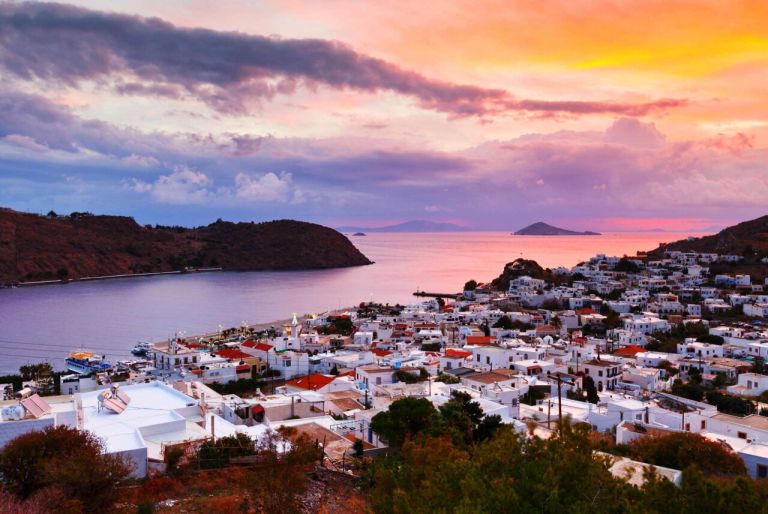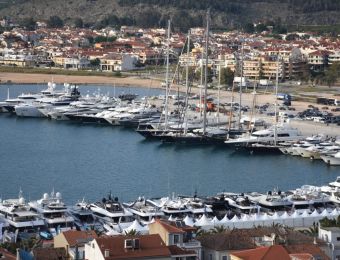Patmos: Travelling to the “Jerusalem of the Aegean”

Πηγή: Αρχείου
It combines mysticism and introspection with a cosmopolitan character. A place ideal for quiet holidays and pleasant hikes. Of course we are talking about Patmos or otherwise the island of the Apocalypse.
In the “Jerusalem of the Aegean” – as Patmos is known worldwide – the island where St. John the Theologian in exile arrived to become an ascetic and then write, in about 95 AD, the holy Book of Revelation, is one of the most important religious and atmospheric destinations, without lacking the cosmopolitan air of an Aegean island.
Patmos is a place blessed with admirable natural beauty and rich cultural and especially religious heritage.
It is a spiritual beacon that radiates to the ends of the world, inviting the faithful to come to experience its unique divine and mystical aura.
The port and the capital of the island, is its largest settlement and gathers all tourist traffic. The administrative buildings of the Italian occupation make their presence felt from the first moment you arrive on the island, while the labyrinthine streets with shops and restaurants beckon you to discover them.
The coastline of Patmos displays an impressive variety of coasts, bays, harbors, capes and rocks with the most curious shapes to impress the visitor.
The Holy Island
A reference point not only for the island, but for the whole of Christianity is the Holy cave of the Apocalypse. Located on the hill between Skala and Chora, the Holy Cave of the Apocalypse has been transformed into a place of worship, where pilgrims have the opportunity to see the place where the Apocalypse was written, to touch the triple cleft in the rock, to fathom the site where the Evangelist rested, as well as to touch the pits in the rock which he grasped to get up, while the lectern of Prochoros, St. John’s faithful scribe, stands to one side, carved in the rock.
The Holy Cave has been declared a World Heritage Site by UNESCO together with the Monastery of Saint John the Theologian.
Built on the top of Chora, the Monastery dominates the entire island and resembles a Byzantine castle.
Archaeological finds testify that it was built on the site of an ancient temple of Artemis and an early Christian basilica. It is surrounded by an irregular rectangular defensive enclosure dating from the end of the 11th century to the 17th, while the Catholicon, the altar and the cells are preserved from the Byzantine period.
The largest Nunnery lies the southwestern part of the island, the Holy Monastery of the Annunciation with a stunning view towards the Gulf of Gardens, since it is built on the edge of the precipice.
Of course, you should not miss visiting the Holy Church of Agios Ioannis the Theologians located in Skala near the harbor where during the early Christian era it was used as a “baptistery”. Tradition states that St. John the Theologian baptized the Patmians there, while another tradition states that the Saint was standing there when he sent the wizard Kynopos to the bottom of the sea.
Undoubtedly, the most important archaeological site of Patmos is that of Kastelli where the ruins of the ancient acropolis and the foundations of the temple of Apollo are preserved.
To visit the ancient acropolis of Patmos, you should follow the path of about three kilometers that starts from the port of Skala (one to one and a half hours walk), a short distance from the Baptistery of Saint John.
The Mills are a living monument, a bridge that unites the past with the present and the future. They are built to the east of the Holy Monastery of Patmos, on top of a hill overlooking the sea.
You should not miss visiting, the Simantiri Mansion, the oldest building in Chora, after the Monastery. A living museum, with the last descendant of the Simantiris family welcoming you and showing you around, telling you the history of every space and object of the mansion.
Διαβάστε όλες τις τελευταίες Ειδήσεις από την Ελλάδα και τον Κόσμο

























Το σχόλιο σας